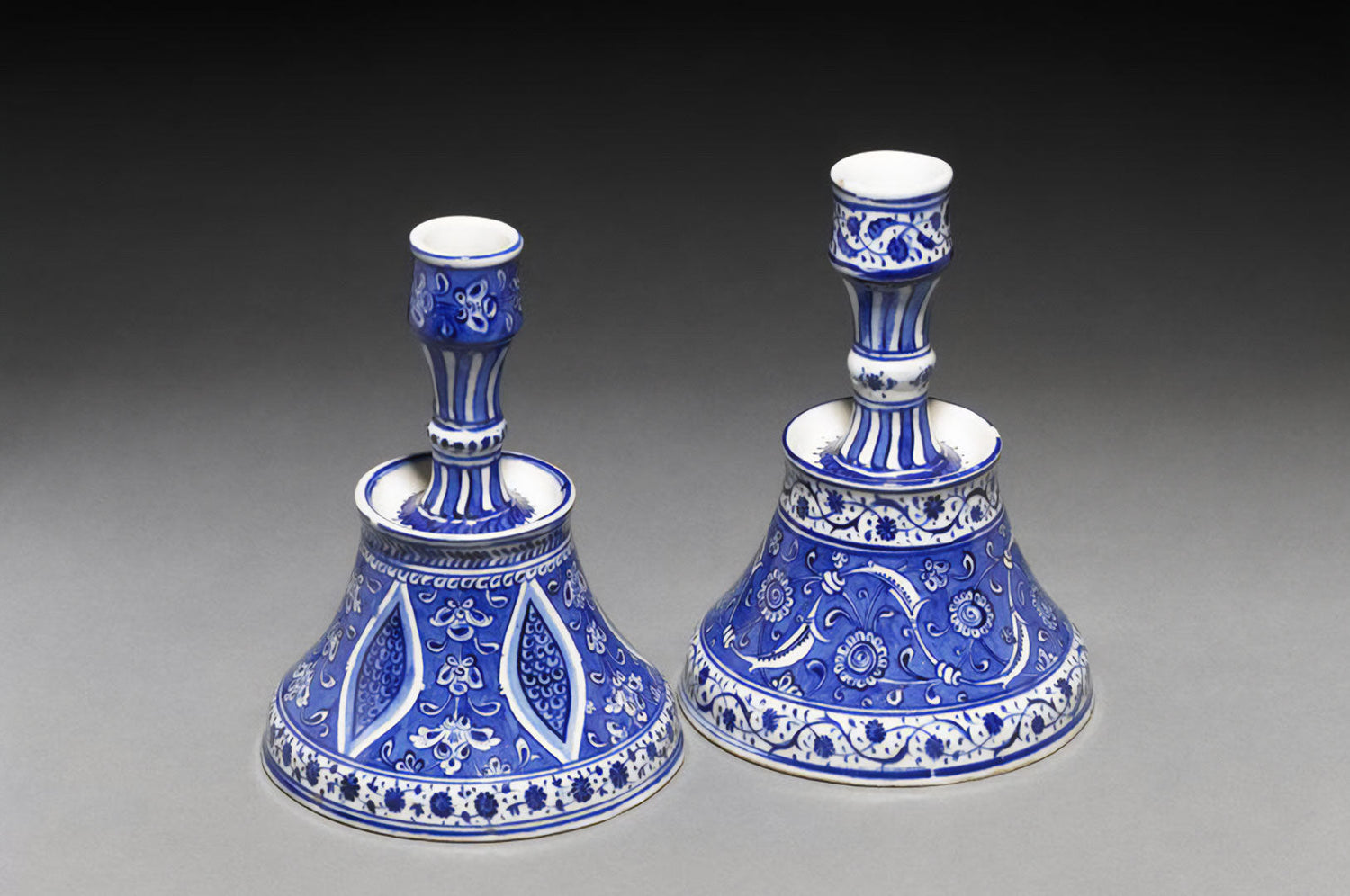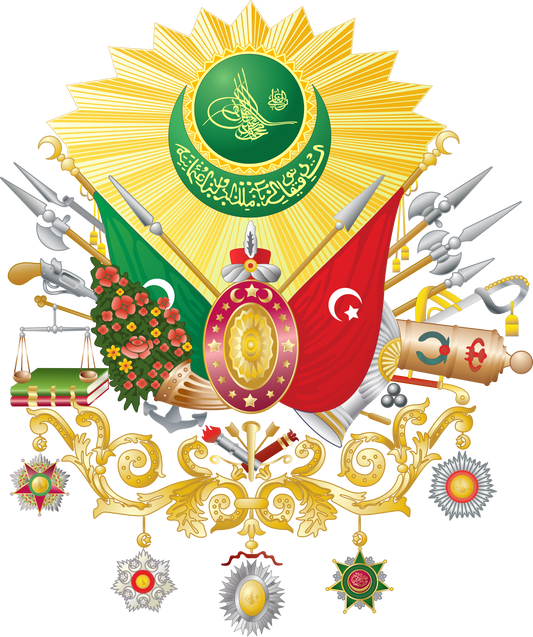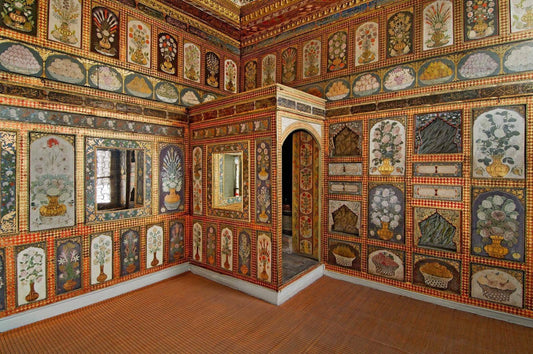A comparison of vessels mentioned in Ottoman miniatures and written documents with surviving examples from Iznik reveals interesting results. Because these documents were largely prepared by clerks and administrative personnel rather than masters or relevant experts, they lack descriptive information on vessel types. Consequently, establishing a connection between the vessels mentioned in these documents and surviving examples is quite difficult. Examination of the documents reveals the rich diversity of types and forms of Iznik ceramic vessels. Now, let's take a closer look at the characteristics of these tiles.
Ceramic Vessels Decorated with Precious Stones
There is no record in the documents of Iznik ceramic vessels decorated with precious stones and gold mountings. This technique, used by the Ottomans to enrich Chinese porcelain, was also applied to Iznik ceramics. Two bottles from the Selimiye Mosque in Edirne, one currently on display in the Turkish and Islamic Arts Museum and the other in the Tiled Kiosk, appear to have been decorated using this method. The stones in both examples have fallen out, but their sockets are clearly visible.
Candles
Among the ceramic examples that have survived to the present day but are not mentioned in documents are oil lamps and hanging balls. They were likely used only in structures such as mosques and tombs, so they were not recorded in the expense books. Because they were used in fire-resistant structures such as stone or brick, most have survived without significant damage over time. Of the 25 oil lamps that have survived from the 16th century, the oldest known is the one in the Tomb of Bayezid II, dating from around 1512. All early oil lamps are small (22-28 cm high). With the gilded white oil lamp in the Mosque of Selim I, the size increases, and the lower section begins to take on a pear-shaped shape. This development culminated in the 49 cm-high oil lamp said to come from the Sokollu Mehmed Pasha Mosque. After this date, the size decreases once again. Unlike similar glass lamps, richly decorated ceramic lamps do not provide adequate illumination in interior spaces. Therefore, it is assumed that they carry symbolic rather than functional meaning. It is also said that ceramic lamps and hanging balls were used for acoustic purposes.
Footed Basins
The most ambitious products produced by İznik masters were the large hemispherical footed basins. These massive pieces, measuring 40-45 cm in diameter and 20-28 cm high, were crafted with a technical skill unparalleled elsewhere in the Islamic world. Their exceptionally rich and elaborate decoration suggests they were symbols of prestige for the Ottoman elite. Extant examples date from the mid-1500s to the mid-1550s. Little is known about the function of footed basins. They are mentioned neither in miniatures depicting banquets and gatherings nor in palace kitchen records.
Pans
In addition to wide-rimmed plates, Iznik workshops also produced flat-bottomed dishes with or without rims. The term "dish" first appears in documents in the early 16th century and was used continuously until the early 18th century. As can be seen from miniatures, ceramic dishes were mostly made of metal. It was less common for metal dishes to have ceramic lids. However, the existence of both types suggests that these dishes were interchangeable.
Plates
Plates were the most commonly produced type in Iznik workshops. Both miniatures and written documents reveal a wide variety of shapes and sizes. The price register of 1640 records six different-sized plates. These plates measured 21 cm, 25.2 cm, 28 cm, 30.8 cm, 33.6 cm, and 42 cm in diameter. With the publication of this list in 1640, the shape of Iznik plates began to become standardized.
Candlesticks
Ceramic candlesticks with bell-shaped bases are among the few surviving Iznik ceramics. Their form is entirely unique to the Ottoman period, stemming from Ottoman examples of classical Islamic metal candlesticks. Unlike the large metal candlesticks found in mosques and tombs, they are all small, suggesting they were used in homes. Their use for non-religious purposes is evidenced by the fact that a trayed candlestick was among the gifts presented to the palace by the tile merchants' guild in 1582. The candlesticks were not standard products produced in Iznik workshops but were produced only to special orders ('Iznik, Nurhan Atasoy and Julian Raby, pp. 37-48).




